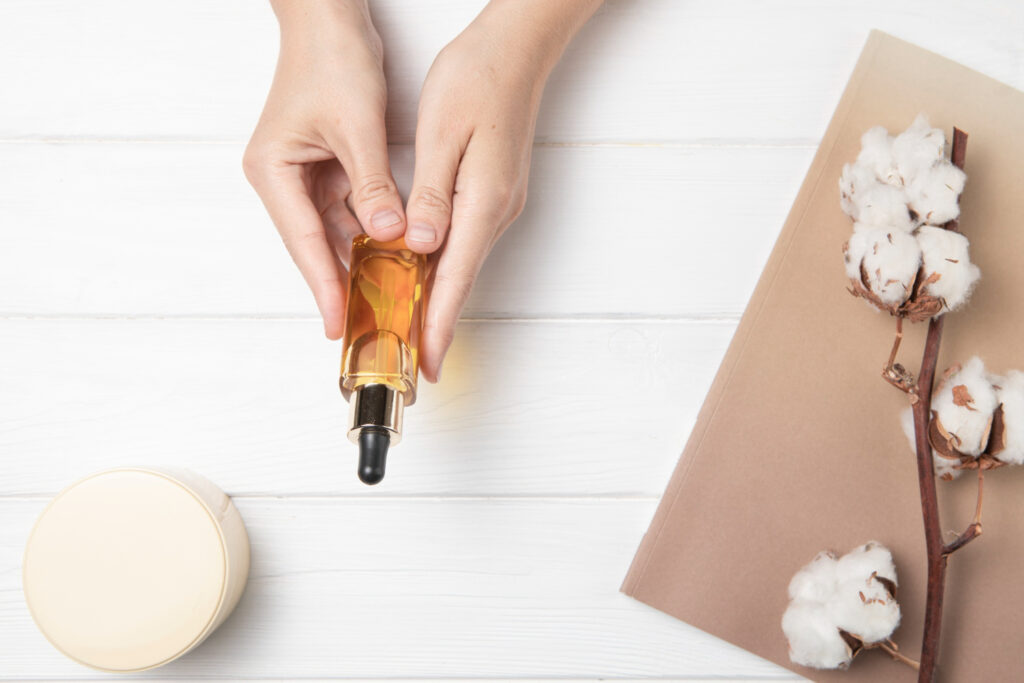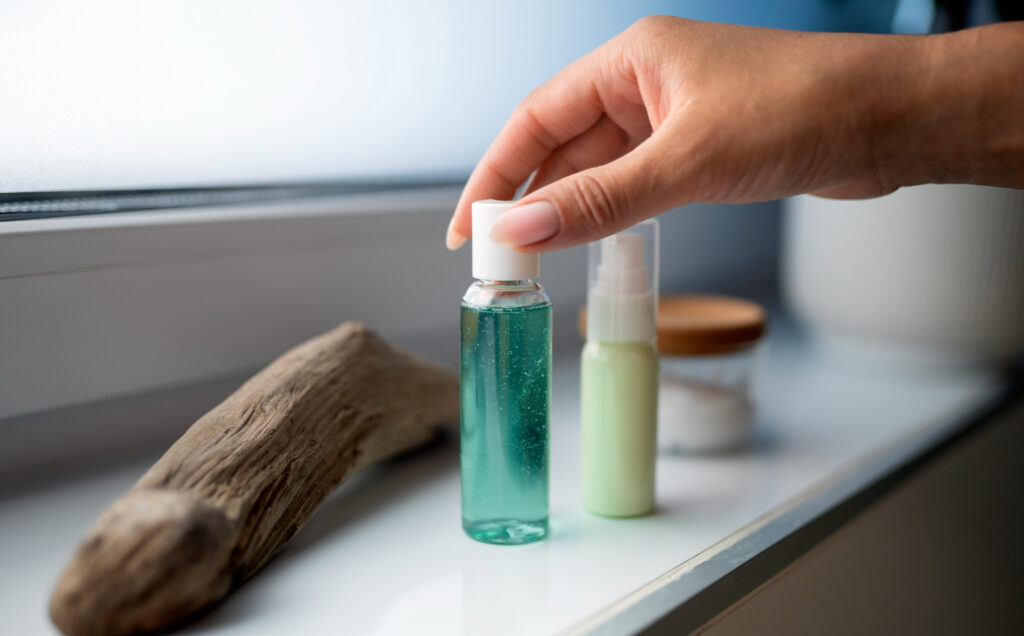DIY Deodorant Without Baking Soda
Deodorant is a daily essential for many of us, helping us stay fresh and confident throughout the day. However, if you're looking to make a DIY deodorant without baking soda, you're not alone. Baking soda can be harsh on sensitive skin, causing irritation and discomfort for some individuals.
Fortunately, there are plenty of natural alternatives available that are both effective and gentle on your skin. In this comprehensive guide, we'll explore these alternatives and provide you with step-by-step instructions to create your own DIY deodorant without baking soda.
Understanding the Reasons to Avoid Baking Soda in Deodorants
Baking soda, scientifically known as sodium bicarbonate, is a widely used ingredient in numerous homemade deodorant formulations. It garners popularity due to its remarkable ability to combat odors effectively. Nevertheless, it's crucial to be aware of the potential drawbacks associated with baking soda-based deodorants, as they can affect different aspects of your skin and overall well-being. Here are some key reasons why some individuals may opt to avoid baking soda in their deodorant choices:
- Skin Irritation: Baking soda's abrasive nature can pose challenges for those with sensitive skin. Its use may lead to skin irritation, causing redness, itching, or a burning sensation.
- pH Imbalance: Baking soda has the capacity to disrupt the natural pH balance of your skin. This disruption can lead to discomfort and further skin irritation.
- Allergic Reactions: Some people may have allergies to baking soda, which can manifest as rashes or hives upon application. Allergic reactions can be uncomfortable and may deter individuals from using baking soda-based deodorants.
- Underarm Darkening: Long-term use of deodorants containing baking soda may contribute to the darkening of the underarm area. This cosmetic concern can be a significant drawback for those seeking to maintain a lighter and more even-toned underarm appearance.
Given these concerns, it's essential to explore alternative ingredients to create a DIY deodorant that suits all skin types.

Natural Alternatives to Baking Soda
Arrowroot Powder
Arrowroot powder is a remarkable natural starch obtained from the rhizomes of the arrowroot plant, Maranta arundinacea. This versatile substance offers numerous benefits and is commonly utilized in a variety of applications. One of its popular uses is as a viable substitute for baking soda in homemade deodorants. Let's delve into the reasons behind its popularity and a step-by-step recipe for crafting your own DIY arrowroot powder-based deodorant.
Key Benefits of Arrowroot Powder in Deodorants:
- Exceptional Moisture Absorption: Arrowroot powder possesses outstanding moisture-absorbing properties, ensuring your underarms remain comfortably dry throughout the day.
- Skin-Friendly: Its gentle nature makes it an ideal choice for those with sensitive skin, minimizing the risk of irritation often associated with other deodorant ingredients.
- Odor Neutrality: Arrowroot powder is virtually odorless, making it an excellent foundation for deodorant formulations, allowing your chosen fragrances to shine.
DIY Deodorant Recipe with Arrowroot Powder:
Ingredients:
- 3 tablespoons of arrowroot powder
- 2 tablespoons of coconut oil
- 2 tablespoons of shea butter
- 2 tablespoons of beeswax pellets
- 10 drops of your preferred essential oil (e.g., lavender, tea tree, or lemon)
Instructions:
- Begin by melting the coconut oil, shea butter, and beeswax pellets using a double boiler or microwave. This step ensures that the ingredients are thoroughly combined.
- Once melted, remove the mixture from heat and gradually stir in the arrowroot powder. Continue stirring until a smooth and uniform consistency is achieved.
- For a delightful fragrance, add 10 drops of your chosen essential oil(s) to the mixture. Popular options include lavender for a soothing aroma, tea tree for its antibacterial properties, or lemon for a refreshing scent.
- Carefully pour the resulting mixture into an empty deodorant container or an airtight container of your choice. Ensure that it's sealed properly to prevent any contamination.
- Allow your homemade arrowroot powder deodorant to cool and solidify, typically within a few hours.
Cornstarch
Cornstarch, a common household item found in many kitchens, is an excellent alternative to baking soda in DIY deodorants. It shares several advantageous properties with arrowroot powder, making it a versatile choice for those seeking a natural deodorant solution.
Key Benefits of Cornstarch in Deodorants:
- Effective Moisture Absorption: Cornstarch is adept at absorbing moisture, effectively combating underarm wetness and ensuring a dry, comfortable feel throughout the day.
- Gentle on Skin: Just like arrowroot powder, cornstarch is gentle on the skin, making it a suitable option for individuals with sensitive skin who may experience irritation from other deodorant ingredients.
- Versatile Formulation: Cornstarch can be easily blended with various ingredients to create a wide range of deodorant formulations, allowing you to customize your product to meet your preferences.
DIY Deodorant Recipe with Cornstarch:
Ingredients:
1/4 cup of cornstarch: Cornstarch acts as an excellent natural absorbent, helping to keep your underarms dry and odor-free.
1/4 cup of coconut oil: Coconut oil not only provides a smooth texture but also boasts antibacterial properties that can combat odor-causing bacteria.
2 tablespoons of shea butter: Shea butter adds moisture and nourishment to your skin, making it an excellent choice for a deodorant base.
10 drops of your preferred essential oil for fragrance: You have the creative freedom to choose an essential oil that suits your preferences and offers additional benefits. Lavender, for example, can provide a calming effect, tea tree oil offers antibacterial properties, and citrus oils like lemon bring a refreshing scent.
Instructions:
- Begin by melting the coconut oil and shea butter in a microwave-safe bowl or a double boiler. This step is crucial to ensure thorough mixing of these ingredients.
- Once the coconut oil and shea butter are melted, gradually add the cornstarch into the mixture. Stir continuously until you achieve a smooth paste-like consistency. This ensures that all the ingredients are well combined.
- To infuse your DIY deodorant with a pleasing scent, add 10 drops of your chosen essential oil. This step allows you to customize the fragrance to your liking.
- Transfer the resulting mixture into a suitable container of your choice. Make sure the container is sealed securely to prevent any contamination.
- Allow your homemade cornstarch-based deodorant to cool and solidify, which typically takes a few hours. Once it has solidified, your natural deodorant is ready for use.
Kaolin Clay
Kaolin clay, celebrated for its remarkable absorbent properties, is a versatile and gentle natural alternative to baking soda in DIY deodorants. This extraordinary clay offers a range of benefits that extend beyond just keeping underarms dry.
Key Benefits of Kaolin Clay in Deodorants:
- Superior Absorbency: Kaolin clay stands out for its outstanding ability to absorb moisture effectively, helping you stay dry and comfortable throughout the day.
- Soothing Properties: In addition to moisture control, kaolin clay possesses soothing properties that make it an excellent choice for individuals with sensitive skin. It can alleviate irritation and redness in the underarm area.
- Detoxification Support: Kaolin clay's detoxifying properties can help remove impurities and toxins from the skin, enhancing the overall health of your underarms.
DIY Deodorant Recipe with Kaolin Clay:
Ingredients:
- 1/4 cup of kaolin clay
- 2 tablespoons of coconut oil
- 2 tablespoons of shea butter
- 10 drops of your preferred essential oil for fragrance
Instructions:
- Begin by melting the coconut oil and shea butter in a microwave-safe bowl or by using a double boiler. This step ensures that these ingredients blend seamlessly.
- Once melted, incorporate the kaolin clay into the mixture, stirring consistently until you achieve a smooth and uniform consistency.
- To impart a delightful fragrance to your homemade deodorant, add 10 drops of your chosen essential oil. Essential oils like lavender for a calming effect, tea tree for its antibacterial properties, or a citrus oil for a fresh scent are popular choices.
- Transfer the resulting mixture into a suitable container, ensuring it is securely sealed to prevent any contaminants from entering.
- Allow your freshly made kaolin clay-based deodorant to cool and solidify, typically within a few hours.
Activated Charcoal
Activated charcoal has gained significant popularity as a key ingredient in natural deodorants due to its unique properties and numerous benefits. It's not just a trend; it's a valuable addition to your homemade deodorant arsenal.
Key Benefits of Activated Charcoal in Deodorants:
- Superior Odor Control: Activated charcoal excels at adsorbing odor-causing compounds, ensuring you remain fresh and odor-free throughout the day.
- Detoxification Power: This remarkable substance also serves as a detoxifying agent, helping to draw out impurities and toxins from the underarm area, contributing to a healthier skin environment.
- Caution on Dark Residue: It's important to note that activated charcoal has a dark color, and excessive use can leave a noticeable residue on clothing. Thus, it's best to use it sparingly and ensure thorough mixing in your deodorant formulation.
DIY Deodorant Recipe with Activated Charcoal:
If you're looking to create your own natural deodorant with activated charcoal, here's a step-by-step guide:
Ingredients:
- Coconut Oil: You'll need 2 tablespoons of coconut oil. Coconut oil is a great base as it's moisturizing and has antimicrobial properties.
- Shea Butter: Add 2 tablespoons of shea butter to the mix. Shea butter adds creaminess and helps soothe the skin.
- Beeswax Pellets: Include 1 tablespoon of beeswax pellets for texture and to give your deodorant a solid form.
- Activated Charcoal: Use 1 tablespoon of activated charcoal. Activated charcoal is known for its odor-absorbing properties and can help keep you feeling fresh.
- Essential Oil: For a pleasant fragrance, select 10 drops of your preferred essential oil. You can choose from a variety of essential oils like lavender for relaxation, tea tree for its antibacterial qualities, or a citrus oil for a refreshing scent.
Instructions:
- Melt the Ingredients: Begin by melting the coconut oil, shea butter, and beeswax pellets together in a double boiler. This gentle heating method ensures thorough mixing and creates a stable deodorant texture.
- Incorporate Activated Charcoal: Once all the ingredients are fully melted, carefully add the activated charcoal. Stir vigorously to ensure it's evenly distributed throughout the mixture. Continue stirring until the deodorant takes on a consistent color.
- Add Essential Oil: To enhance the aroma of your homemade deodorant, mix in 10 drops of your chosen essential oil. This step allows you to customize the scent according to your preferences.
- Transfer to Container: Pour the resulting mixture into a suitable container with a secure seal to prevent contamination. You can use a clean and empty deodorant stick container, a small jar, or any other container of your choice.
- Cool and Solidify: Allow your freshly made activated charcoal-based deodorant to cool and solidify, which typically takes a few hours. You can speed up the process by placing it in the refrigerator.

Essential Oils
Essential oils are a versatile and aromatic addition to your homemade deodorant recipe. These concentrated plant extracts not only infuse your deodorant with delightful fragrances but also bring a range of additional benefits to the table. You have a plethora of options to choose from, including popular essential oils like lavender, tea tree, eucalyptus, and lemon.
Apart from their pleasant scent, essential oils boast impressive antibacterial and antimicrobial properties. When incorporated into your DIY deodorant, they work tirelessly to combat odor-causing bacteria, ensuring you stay fresh and confident throughout the day. Lavender essential oil, for instance, provides a calming scent while delivering antibacterial benefits. Tea tree oil is known for its powerful antimicrobial properties, making it a go-to choice for those looking for extra protection against odor.
Eucalyptus essential oil offers a refreshing, invigorating aroma, and its antibacterial properties make it an excellent choice for deodorant formulations. Lemon essential oil brings a zesty and revitalizing fragrance while contributing its natural antibacterial prowess to the mix.
So, whether you're seeking a soothing, refreshing, or invigorating scent, essential oils can elevate your DIY deodorant, making it both effective and enjoyable to use.

FAQs about making DIY Deodorant Without Baking Soda
Why should I consider making a DIY deodorant without baking soda?
Baking soda can be harsh on sensitive skin and may cause irritation or allergic reactions. Making a DIY deodorant without baking soda allows you to create a gentler alternative that is suitable for all skin types.
What are the natural alternatives to baking soda in DIY deodorants?
Natural alternatives to baking soda in DIY deodorants include arrowroot powder, cornstarch, kaolin clay, and activated charcoal. These ingredients are effective at absorbing moisture and controlling odor while being gentle on the skin.
Is it difficult to make DIY deodorant without baking soda?
No, it's relatively easy to make DIY deodorant without baking soda. The recipes provided in the guide are straightforward and require only a few ingredients. You can customize your deodorant with your choice of essential oils for fragrance.
Can I use essential oils in my DIY homemade deodorant without baking soda?
Yes, essential oils are a great addition to DIY deodorants. They not only add pleasant fragrances but also offer antibacterial and antimicrobial properties, helping to combat odor-causing bacteria.
Is there a risk of staining my clothes with DIY deodorant made with activated charcoal?
Yes, activated charcoal can have a dark color, and excessive use may lead to staining on light-colored clothing. To avoid this, it's best to use activated charcoal sparingly and ensure thorough mixing in your deodorant formulation.
How long does it take for homemade deodorants to solidify?
Homemade deodorants typically solidify within a few hours after being poured into a container. However, the exact time may vary depending on factors such as room temperature and the specific ingredients used.
Are there any precautions I should take when making and using DIY deodorant without baking soda homemade?
It's advisable to conduct a patch test on a small area of your skin to check for any adverse reactions before applying the deodorant to your underarms. Additionally, store your homemade deodorant in a cool, dry place to maintain its quality.
Can I adjust the fragrance of my DIY deodorant with essential oils?
Absolutely! You have the freedom to tailor the scent of your homemade deodorant by selecting various essential oils or adjusting the quantity of drops you incorporate. This enables you to craft a personalized deodorant with a fragrance that perfectly aligns with your preferences.
Will DIY deodorant without baking soda be as effective as commercial deodorants?
The efficacy of DIY deodorants without baking soda can vary depending on the individual. These homemade alternatives can effectively control odor and moisture for many people. However, the results may differ from person to person. It is advisable to experiment with different natural ingredients and essential oils to discover the combination that works best for your specific needs.
Can I use these DIY deodorant recipes for sensitive skin?
Yes, the DIY deodorant recipes provided in the guide are specially formulated to be gentle on sensitive skin. They utilize ingredients such as arrowroot powder, cornstarch, and shea butter, which are less likely to cause irritation compared to baking soda. These ingredients are chosen with sensitivity in mind, ensuring that your homemade deodorant is both effective and skin-friendly.
Conclusion
Creating your DIY deodorant without baking soda is not only possible but also customizable to suit your preferences and skin type. By using natural alternatives like arrowroot powder, cornstarch, kaolin clay, or activated charcoal, you can maintain freshness and confidence without the risk of skin irritation or pH imbalance.
Remember to conduct a patch test before applying any new deodorant to your underarms to ensure compatibility with your skin. With these natural alternatives and easy-to-follow recipes, you can say goodbye to baking soda-based deodorants and hello to a more skin-friendly, homemade solution.
Sources
https://www.organic-beauty-recipes.com/homemade-deodorant-without-baking-soda/
https://www.c6beauty.com/diy-deodorant-without-baking-soda/
https://bepure.hr/en/deodorant-with-and-without-baking-soda-whats-the-difference/




